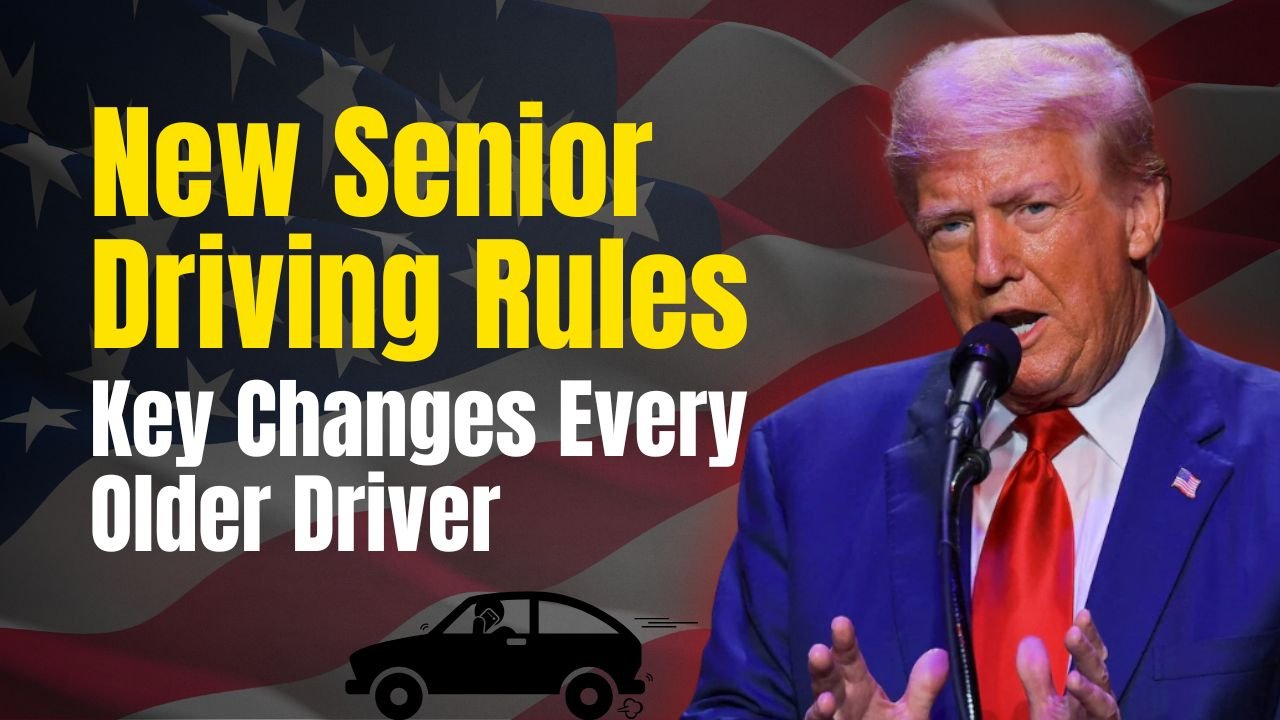New adjustments to America’s senior driving rules for November 2025 bring significant updates designed to improve road safety and support aging drivers. These changes affect how older adults renew their licenses, undergo vision screening, and complete mandatory road assessments. The latest policy adjustments aim to balance driver independence with public safety, making it important for every senior motorist to understand what’s new.
Key Updates to Senior Driving Rules (November 2025)
1. Renewal Requirements for Older Drivers
One of the biggest changes in the 2025 senior driving regulations is a shift in renewal procedures. Many states now require shorter license renewal cycles for drivers above a certain age.
Key points include:
- More states now mandate in-person license renewal for drivers aged 70+.
- Seniors must complete updated vision tests every renewal period.
- Some regions require a cognitive screening questionnaire for drivers 75 and older.
These changes aim to ensure that older drivers remain capable and confident behind the wheel.
2. Mandatory Vision and Health Screening
Vision ability declines naturally with age, which has prompted new senior driver health evaluation rules.
Updated screening measures include:
- Stricter eyesight standards for night driving.
- Annual or biennial vision check-ups for drivers over 72.
- Optional but recommended medical fitness forms completed by a primary care physician.
These rules help identify issues early and promote safer driving habits.
3. New Road Test Requirements
Several states have introduced refresher road test requirements for drivers above certain age thresholds.
What’s new?
- Drivers aged 80+ may be asked to complete a short road skills assessment.
- The test evaluates reaction time, lane changes, braking response, and spatial awareness.
- Seniors who pass are cleared for full licensing; others may be offered restricted licenses (e.g., daytime-only driving).
The goal is not to take away independence, but to ensure safe driving conditions for seniors and the community.
4. Restricted License Options
To help maintain safe mobility, states are expanding restricted senior license categories.
Possible restrictions include:
- No driving after sunset.
- Limits on freeway or highway driving.
- Required use of corrective lenses.
- Monthly or annual medical clearance updates.
These tailored restrictions allow older adults to continue driving while reducing risk.
5. Technology-Based Monitoring
New senior driver monitoring rules encourage the use of in-car safety technology.
Tech now recommended or required:
- Automatic emergency braking (AEB)
- Lane-departure alerts
- Blind-spot monitoring
- Collision warning sensors
These systems support seniors by improving reaction time and overall situational awareness.
6. Family and Physician Reporting Guidelines
Updated 2025 older driver safety laws allow families and healthcare providers to formally report concerns about a driver’s ability.
Reporting changes include:
- Confidential reporting options for families.
- Medical evaluations mandated after certain reports.
- Temporary suspension until testing is completed.
These provisions focus on early detection of potential driving issues.
Many seniors are watching closely as lawmakers debate a new proposal that could significantly boost monthly benefits. Social Security Recipients May Receive an Extra $1,200 if New Bill Is Approved — a title that captures the hope many retirees feel today. This potential increase aims to help older Americans handle rising living costs, medical expenses, and everyday essentials. If passed, the bill would offer meaningful financial relief, especially for fixed-income beneficiaries who struggle to keep up with inflation. The proposal has sparked major interest, raising expectations nationwide.
Conclusion
The new senior driving rules for November 2025 highlight America’s commitment to safer roads while supporting aging adults. With revised renewal procedures, stricter health checks, optional road testing, and expanding technology requirements, these changes help ensure that older drivers remain safe, confident, and well-supported on the road. Staying informed about these updated regulations helps seniors, their families, and the broader community create a safer driving environment for everyone.
FAQs
1. Why were the senior driving rules updated for 2025?
The rules were updated to enhance road safety, address age-related driving challenges, and ensure older motorists receive proper assessments.
2. Do all seniors need to take a road test under the new rules?
Not all. Only certain age groups—generally 80+—may be required to take a short refresher driving test depending on state laws.
3. Are restricted licenses permanent for older drivers?
No. Many restricted licenses are temporary and can be adjusted or removed if the senior passes required assessments or improves medically.


